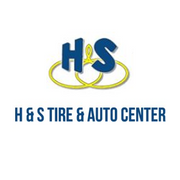4 Top Reasons Why Your Car Pulls to One Side

When you operate your vehicle, you might notice slight shifts to the left or right when you roll over bumps, but your automobile shouldn't be regularly veering in one direction. This can occur as a result of mechanical issues that may require professional auto repairs. Here are some common causes of pulling and what an auto mechanic can do to fix it.
What Causes Vehicles to Pull in One Direction?
1. Wheel Misalignment
Alignment refers to the angles of the wheels relative to one another and the road. Wheels may become misaligned as a result of rolling over potholes or hitting curbs. When this happens, you might notice your vehicle veering to one side. If you continue to drive on misaligned wheels, incorrect angles may increase stress and pressure on tires, leading to worn tread, flats, and blowouts. An auto mechanic can adjust the angles to help your car drive straight and prolong the life of your tires.
2. Worn Suspension

Suspension systems, which sit between the lower frame and the road, absorb shock to ensure a smooth ride. They also increase friction between the wheels and the road to improve steering and handling. If your vehicle pulls to the left or right, suspension components such as the springs, shocks, or struts may be worn or damaged. An auto repair technician can replace the affected parts to keep your car moving on a straight trajectory.
3. Brake Problems
When you depress the brake pedal, calipers apply pressure to the brake pads and rotors, which bring the wheels to a stop. If your vehicle veers one way or the other when you press the brakes, this may indicate a stuck caliper or unevenly worn braking components. When this happens, your brakes may apply different levels of pressure to the wheels, causing your vehicle to pull to the left or right while decelerating. An auto mechanic can adjust a stuck caliper or replace deteriorated pads and rotors to restore proper handling.
4. Uneven Tire Pressure
Tires gradually lose air due to outdoor temperature fluctuations or small volumes of air seeping out of the valve stems. If one tire has lower pressure than the other, your vehicle may sink and shift in the direction of the lower pressure, leading to pulling. You can check the pressure by attaching a gauge to each valve stem and comparing the pounds per square inch (psi) to the recommended psi in your owner's manual, adding more air as necessary. If you need to add air frequently, an auto repair technician can inspect for tread punctures or sidewall damage and replace any damaged tires.
If your vehicle pulls to one side, contact H & S Tire & Auto Center in Wentzville, MO. These auto mechanics specialize in hometown care, providing personalized auto repairs and maintenance along with diagnostics and inspections to drivers throughout Lake St. Louis and the surrounding areas. Call (636) 327-5225 to request an estimate on repairs, and visit the website to learn more about how they can help keep your vehicle fully functional.
About the Business
(165 reviews)
Have a question? Ask the experts!
Send your question

